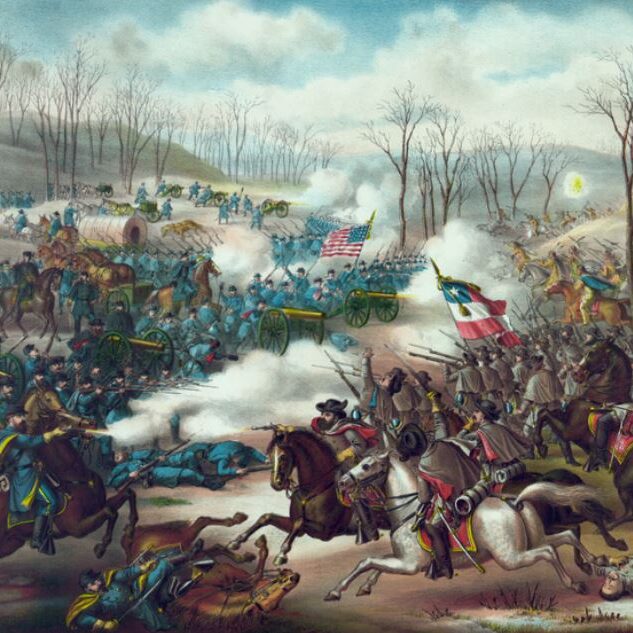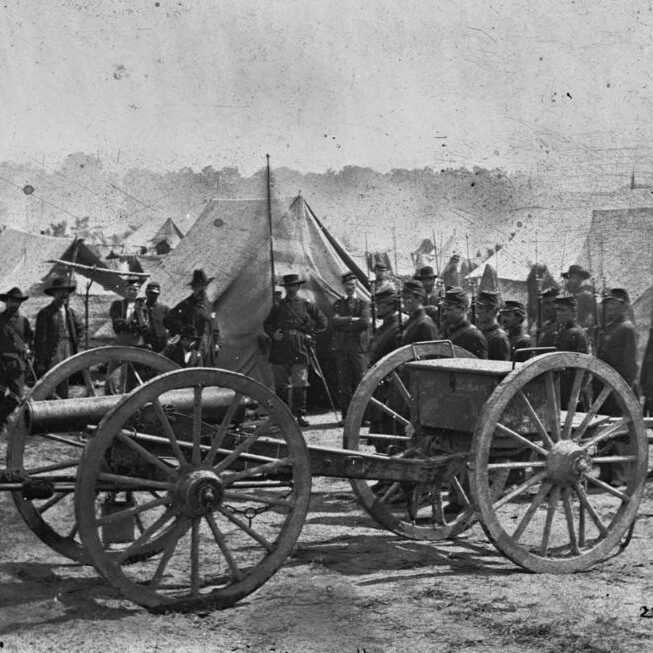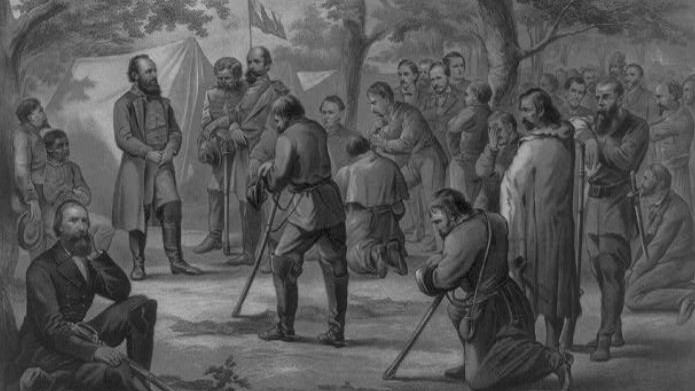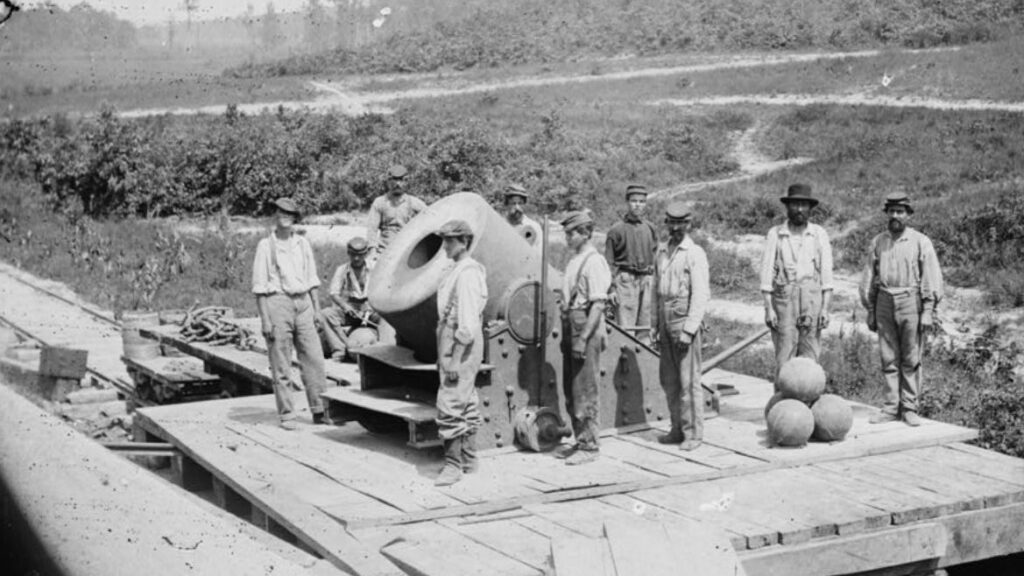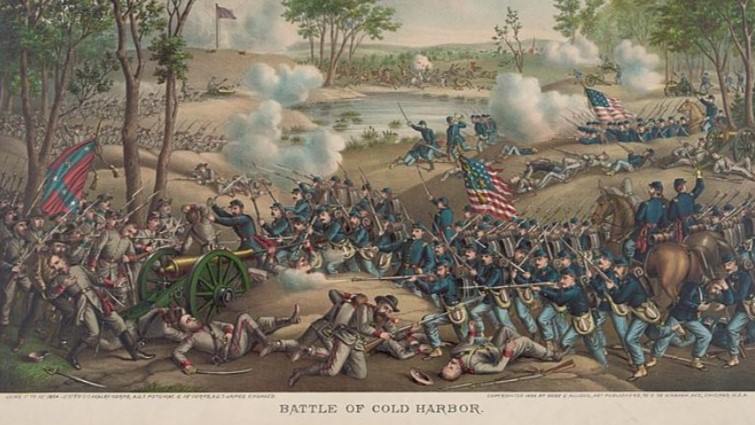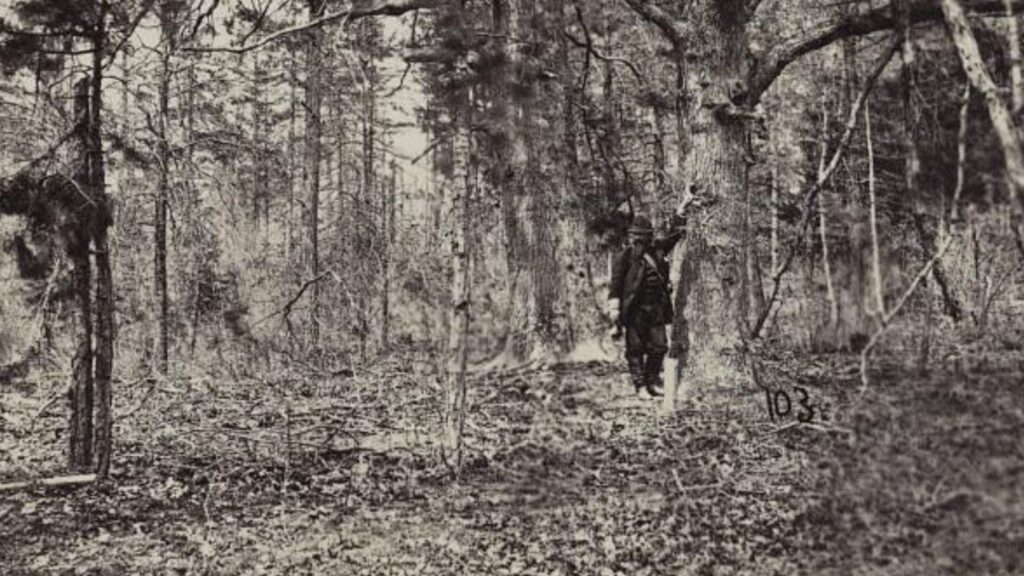Were there any Civil War battles fought in Arkansas? The American Civil War saw several significant battles take place in Arkansas. From the Battle of Pea Ridge to the Battle of Marks’ Mills, each engagement left a lasting impact on the region.
In total there were 17 Civil War battles were fought in Arkansas. This article provides a detailed overview of the eight most significant battles in Arkansas. Join us as we explore the historical significance of these pivotal moments in Arkansas during the Civil War.
- 1. The American Civil War in Arkansas
- 2. The Battle of Pea Ridge, Arkansas (March 1862)
- 3. Battle of Prairie Grove, Arkansas (December 7, 1862)
- 4. The Battle of Arkansas Post (January 1863)
- 5. The Battle of Helena, Arkansas (July 1863)
- 6. Battle of Little Rock, Arkansas (September 10, 1863)
- 7. The Battle of Poison Spring, Arkansas (April 1864)
- 8. The Battle of Marks' Mills (April 1864)
- 9. The Battle of Jenkins' Ferry (April 1864)
- 10. Frequently Asked Questions
- Further Reading
1. The American Civil War in Arkansas
The American Civil War in Arkansas marked a significant period in the state’s history, as it became a battleground between Union and Confederate forces.
Arkansas’ strategic location along the Mississippi River played a key role in the conflict, with Union forces aiming to gain control of this vital waterway.
The state’s economy heavily relied on cotton agriculture, further intensifying its involvement in the war due to the economic interests at stake.
Confederate troops in Arkansas faced challenges such as limited resources and a Union blockade, leading to fierce battles and campaigns throughout the state.
The battles of Pea Ridge and Prairie Grove were crucial engagements that showcased the significance of Arkansas as a Confederate state.
2. The Battle of Pea Ridge, Arkansas (March 1862)
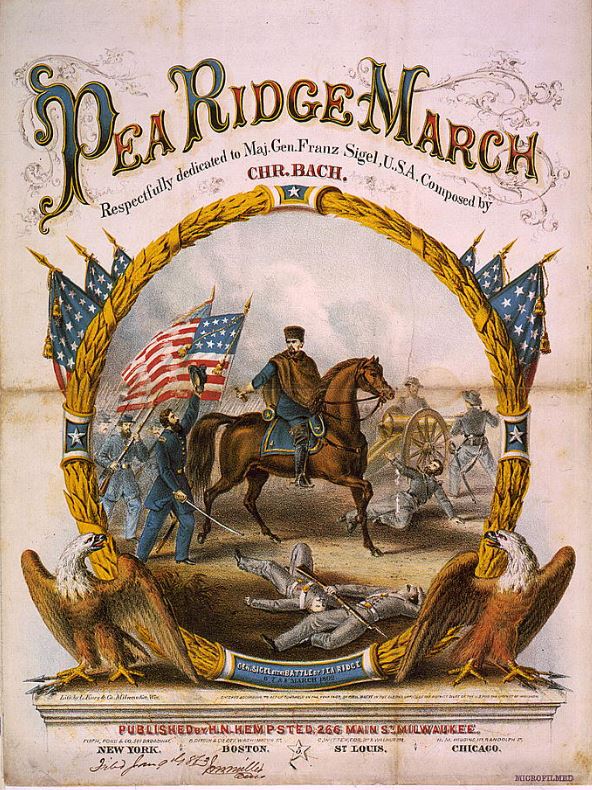
The Battle of Pea Ridge was fought in March 1862 in Arkansas.
This two-day battle, also known as the Battle of Elkhorn Tavern, resulted in a critical Union victory that significantly impacted the course of the war in the western theater.
The Opposing Sides and Their Strategies
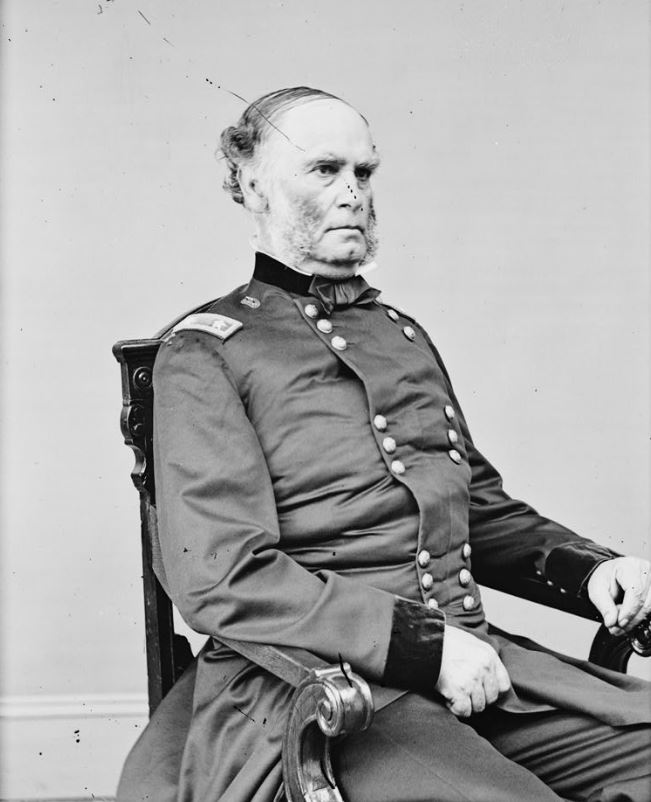
The Union, led by Major General Samuel R. Curtis, aimed to solidify their control over Missouri and northern Arkansas by defeating the Confederate forces.
The Confederate army, under the command of Major Generals Earl Van Dorn, Sterling Price, and Benjamin McCulloch, sought to recapture Missouri and establish a Confederate stronghold in the region.
The Course of the Battle
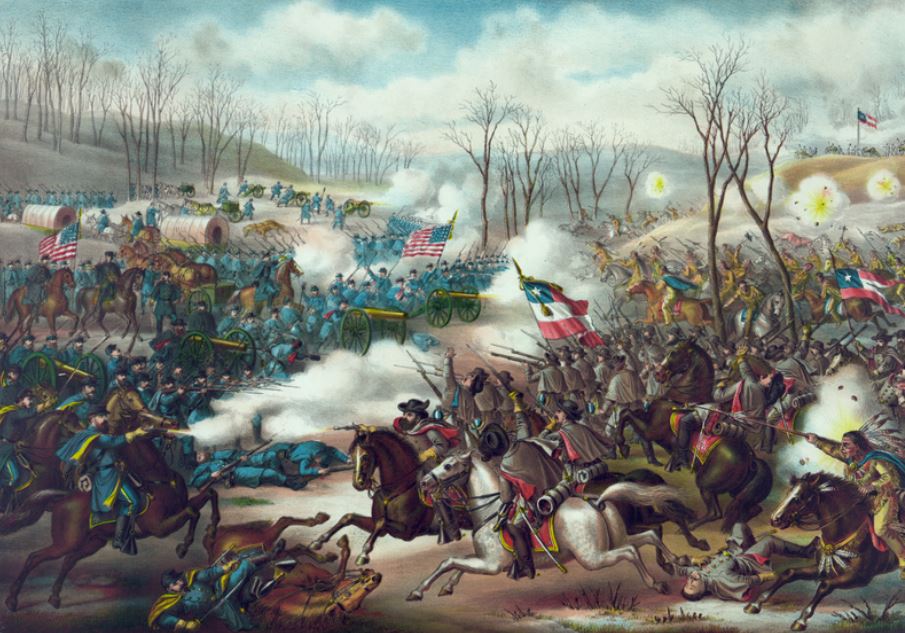
The Confederate strategy involved splitting their army and launching a surprise attack on the Union forces. However, miscommunication and delays hampered their plan, allowing the Union to prepare their defenses.
On the first day of the battle, the Confederates attacked Union positions at Leetown and Elkhorn Tavern. The Union, under Curtis’s leadership, successfully defended against these assaults.
The second day witnessed renewed Confederate attacks, primarily focused on Elkhorn Tavern. Despite their efforts, the Confederates were unable to breach the Union defenses and ultimately faced defeat.
A Turning Point in the Civil War
The Union victory at Pea Ridge proved to be a significant turning point in the Civil War.
It secured Union control of Missouri, preventing the Confederates from regaining a foothold in the state. This strategic win bolstered Union morale and strengthened their position in the western theater, paving the way for future Union victories in the region.
The Battle of Pea Ridge, though often overshadowed by other major Civil War battles, was of strategic significance in the western theater.
Casualties at Pea Ridge, Arkansas
The casualties incurred during the Battle of Pea Ridge were substantial, with both Union and Confederate troops suffering heavy losses in the fierce combat.
For the Union forces, the battle resulted in approximately 203 killed, 980 wounded, and 201 missing.
On the Confederate side, the numbers were equally grim – around 800 killed, 1,300 wounded, and 300 missing.
The aftermath of the battle at Pea Ridge left both sides reeling and forced them to reassess their strategies and regroup their forces for future engagements.
3. Battle of Prairie Grove, Arkansas (December 7, 1862)
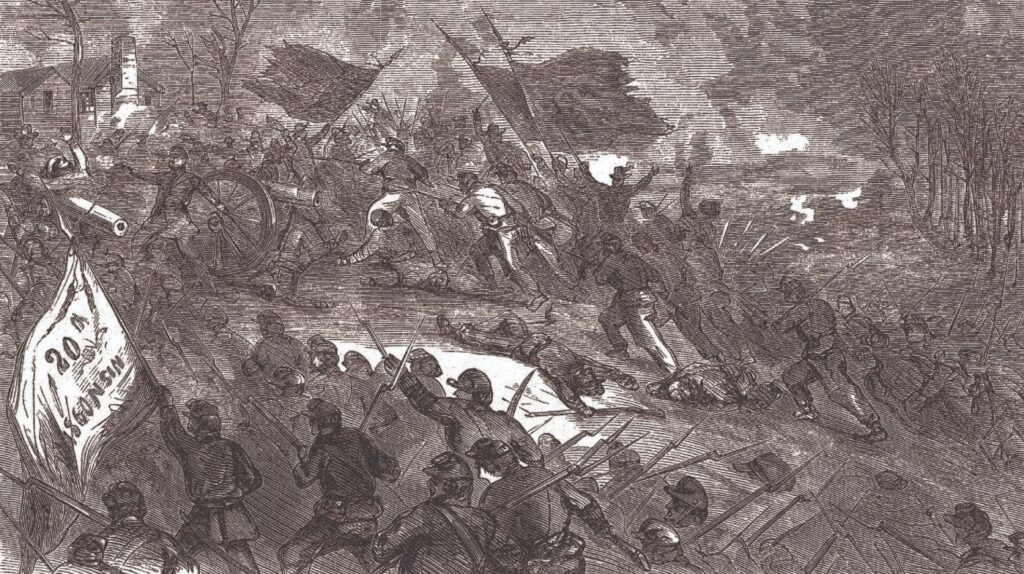
The Battle of Prairie Grove, fought on December 7, 1862, near the town of Prairie Grove, Arkansas, was a pivotal Civil War battle in the Trans-Mississippi Theater. While tactically inconclusive, the battle resulted in a strategic Union victory that secured their control of northwest Arkansas and prevented a Confederate invasion of Missouri.
The Battle Phase at Prairie Grove
The battle unfolded in several phases:
During the the Confederate cavalry skirmished with Union forces initially, with some early success for the Confederates.

As Union reinforcements led by General Herron arrived, they engaged the Confederate lines in intense artillery duels and infantry charges. The Borden Farm became a focal point of heavy fighting, with both sides suffering significant casualties.
General Blunt arrived with his fresh Union troops, launching attacks on the Confederate left flank. While Union attempts to gain the upper hand were initially met with resistance, their massed artillery fire proved decisive in halting Confederate advances.
As darkness descended, both sides exhausted and with substantial losses, the Confederates ultimately held the battlefield. However, realizing their dwindling ammunition and lack of reinforcements, they withdrew under the cover of night.
Casualties at Prairie Grove
The battle came at a heavy cost. Roughly 2,500 casualties were reported, with both sides experiencing nearly equal losses.
However, The Confederates suffered significantly from desertion after the battle, further weakening their ranks.
While the battle itself was ultimately a tactical stalemate, the Union secured a significant strategic victory. Union control of northwest Arkansas and Missouri was solidified, preventing a potential Confederate invasion.
4. The Battle of Arkansas Post (January 1863)
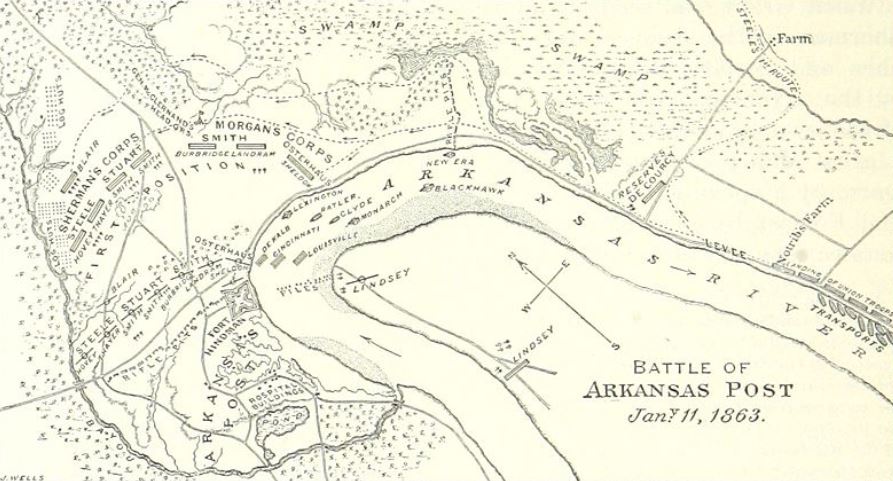
The Battle of Arkansas Post in January 1863 saw clashes between Confederate General Sterling Price and Union General Francis Herron for control of the strategic Arkansas Post.

Arkansas Post held a vital position on the Arkansas River, serving as a key transportation hub and supply route for Confederate forces.
Recognizing its importance, both Price and Herron maneuvered their troops meticulously in an attempt to secure this crucial foothold.
The Confederate defenders, under Price’s command, put up a fierce resistance against Herron’s Union forces. The engagement lasted for days, with intense fighting and strategic maneuvers defining the course of the battle.
Details of the Battle
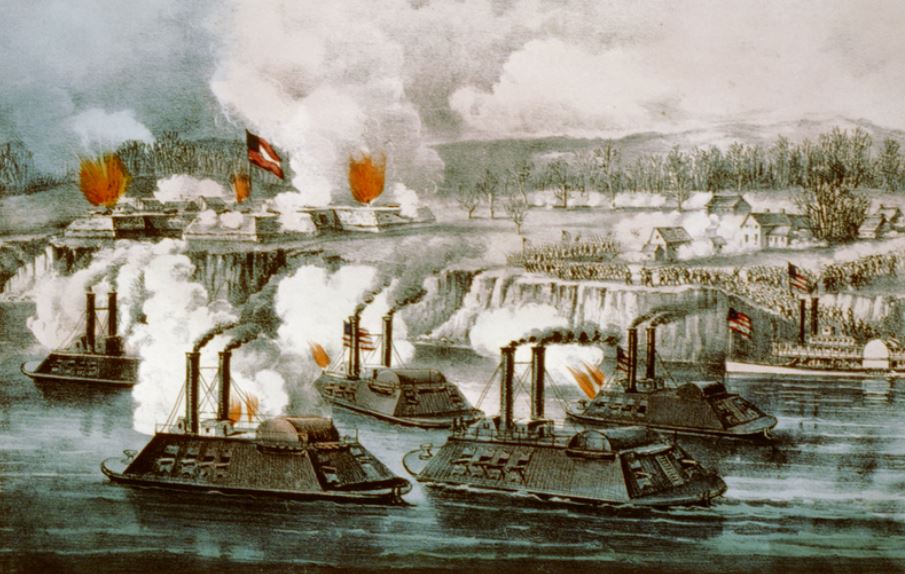
Confederate forces constructed Fort Hindman in late 1862 to control the strategic Mississippi River. In January 1863, Union troops under the command of Major General John A. McClernand arrived near the fort, initiating a three-day siege.
The Union initiated their assault with a surprise attack, catching the Confederate defenders off guard.

Union gunboats under the command of Admiral David D. Porter played a crucial role by relentlessly bombarding Fort Hindman. This bombardment inflicted significant damage on the fort’s infrastructure.
Adding to the pressure on the Confederates, General Sherman‘s forces executed a flanking maneuver. This tactic aimed to cut off potential Confederate escape routes and limit their ability to receive reinforcements. Simultaneously, Union land artillery units engaged in sustained attacks.
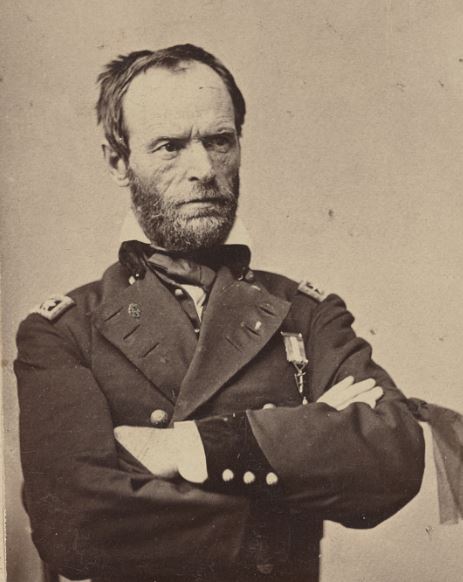
Despite facing overwhelming odds, the Confederates initially refused to surrender.
However, late in the afternoon, white flags of surrender began appearing along the Confederate lines, marking a turning point in the battle.
Initial confusion arose due to Confederate Brigadier General Thomas J. Churchill’s refusal to authorize the surrender. Despite this, other Confederate commanders recognized the futility of continued resistance and eventually agreed to lay down their arms.
Casualties at Arkansas Post
The casualties suffered during the Battle of Arkansas Post highlighted the toll of organizing for war, as Confederate units faced heavy losses in the conflict. Around 140 men were killed or wounded and almost 5,000 taken prisoner.
Union forces lost 1,000 men in their victory.
5. The Battle of Helena, Arkansas (July 1863)
On July 4th, 1863, amidst the backdrop of the American Civil War, a clash occurred near Helena, Arkansas.
Confederate forces, numbering over 7,500 and led by Lt. Gen. Theophilus Holmes, aimed to capture the strategically important Union-held town. Facing them were roughly 4,100 Union troops under the command of Maj. Gen. Benjamin Prentiss, who had fortified Helena with four artillery batteries and a fort.
The Battle
Holmes’ plan involved a three-pronged assault.
- Brig. Gen. James Fagan was tasked with attacking the Union center Battery C on Graveyard Hill.
- Brig. Gen. Sterling Price would attack the south of the Union line.
- Maj. Gen. John Marmaduke, supported by Brig. Gen. Lucius Walker, would attack from the north.
However, communication breakdowns and differing interpretations of Holmes’ orders hampered the Confederates.
Fagan’s attack began before dawn, followed shortly by Marmaduke’s. Facing stiff resistance and heavy artillery fire, Fagan’s initial progress stalled.
Price’s attack was delayed further due to confusion and the need to leave artillery behind.
Meanwhile, Marmaduke’s attack towards the north also faltered.
Walker’s cavalry, meant to support him, remained largely inactive, leaving Marmaduke’s dismounted troops vulnerable.
By 7:00 am, Price finally launched his attack on Graveyard Hill but was met with devastating fire from Battery C and other Union positions.
Despite managing to briefly capture the battery, Confederate disorganization and lack of follow-up allowed the Union forces to retake it. Fagan’s renewed attacks also failed, and by 10:30 am, with mounting casualties and dwindling morale, Holmes ordered a general retreat.
Casualties at the Battle of Helena
The battle, though relatively brief, resulted in significant casualties.
The Confederates suffered heavily, losing an estimated 1,636 men, with the brunt of the losses falling on Fagan, Parsons, and McRae’s brigades.
The Union, on the other hand, reported 239 casualties, demonstrating the effectiveness of their defenses and the tactical shortcomings of the Confederate attack.
The failed assault on Helena proved to be a costly miscalculation for the Confederacy. It not only secured Union control of the strategically important town but also exposed the weaknesses in their leadership and coordination.
The battle ultimately served as a turning point in the fight for Arkansas, paving the way for a successful Union campaign to capture Little Rock later that year.
6. Battle of Little Rock, Arkansas (September 10, 1863)
In September 1863, the fate of Arkansas hung in the balance at the Battle of Bayou Fourche, also known as the Battle of Little Rock.
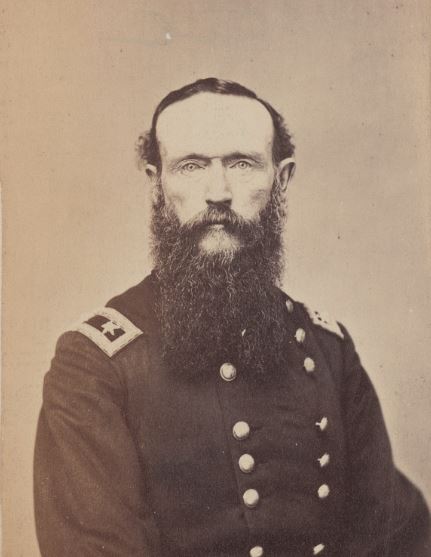
Union forces under General Frederick Steele, emboldened by the fall of Vicksburg, launched an offensive towards the Confederate capital of Little Rock.
Opposing them was General Sterling Price, whose outnumbered troops dug in north of the Arkansas River and near the Bayou Fourche, a natural obstacle southeast of the city.

On September 10th, the battle commenced. Union cavalry under General John Davidson crossed the Arkansas River and engaged the Confederates, led by General John Marmaduke, near the Bayou Fourche.
Supported by artillery fire from across the river, Davidson’s forces pushed back the Confederate line, forcing their retreat towards Little Rock.
By nightfall, the Confederate defense crumbled, and Little Rock fell to Union control.
Union casualties were reported at around 239, including both killed and wounded.
By contrast the Confederates suffered significantly higher losses, estimated at around 1,636 men.
This victory wasn’t just about capturing a city; it secured Union dominance in Arkansas and significantly demoralized the Confederacy west of the Mississippi.
7. The Battle of Poison Spring, Arkansas (April 1864)
The American Civil War wasn’t just fought on grand battlefields; smaller skirmishes also played a crucial role in shaping the war’s course. The Battle of Poison Spring, fought in Arkansas on April 18, 1864, exemplifies this.
It was a turning point in the Camden Expedition, a Union attempt to capture Shreveport, Louisiana.
The Battle
Union forces under Major General Frederick Steele were pushing south through Arkansas, facing Confederate resistance led by General Sterling Price.
However, Union supply lines stretched thin, forcing them to send a detachment under Colonel James M. Williams to forage for provisions. This detachment, including the 1st Kansas Colored Infantry, became the target for a Confederate ambush.
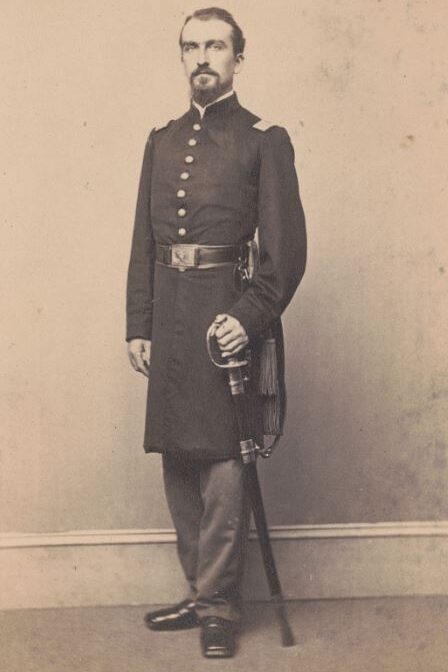
Learning of the Union movement, Confederate forces under Generals John S. Marmaduke, William L. Cabell, and Samuel B. Maxey converged on Williams’ column.
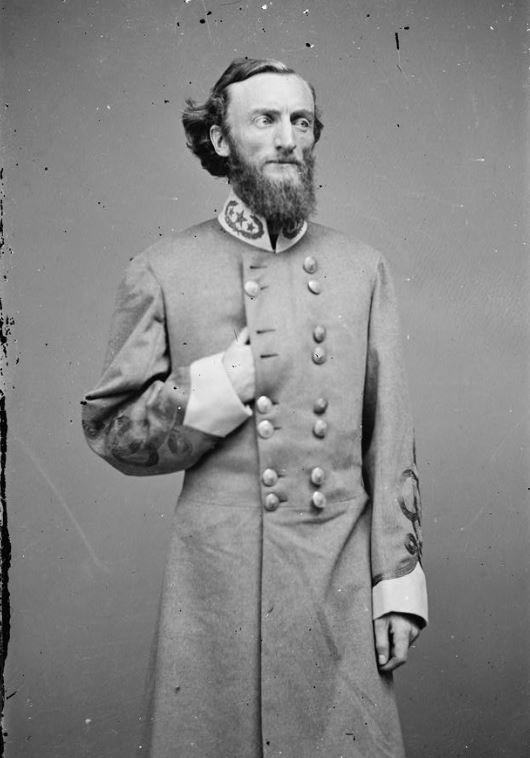
Their plan involved blocking the Union path with Marmaduke and Cabell’s troops, while Maxey’s division launched a flanking attack.
The initial Confederate assault met resistance, particularly from the 1st Kansas Colored Infantry.
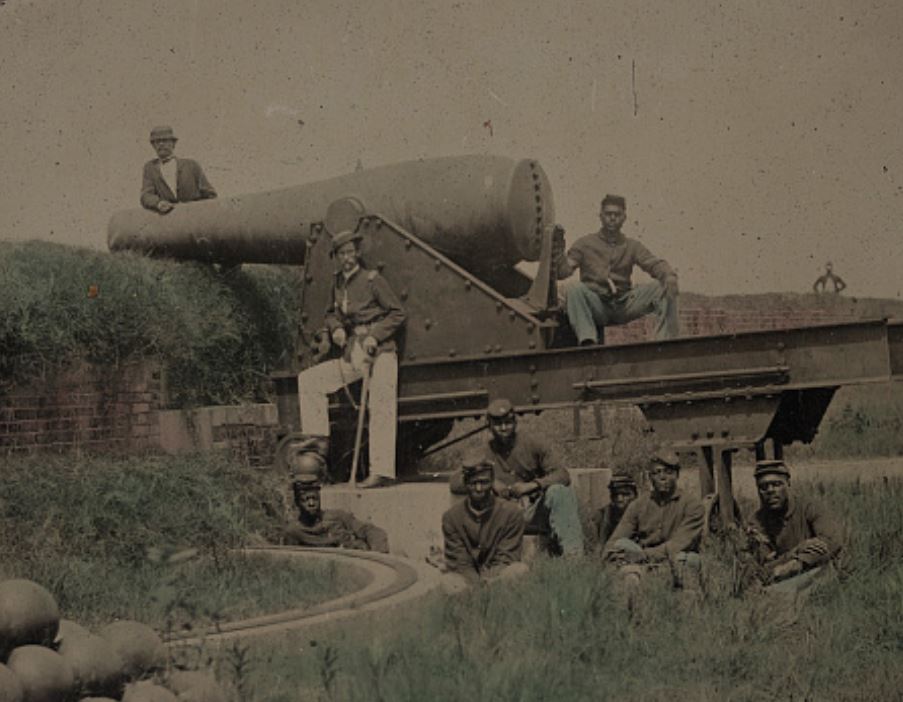
However, facing overwhelming numbers and diminishing ammunition, the Union line faltered. Confederate forces, particularly Choctaw warriors under Colonel Tandy Walker, inflicted heavy casualties and engaged in brutal treatment of captured African-American soldiers.
Casualties at the Battle of Poison Spring
The Battle of Poison Spring resulted in significant losses for both sides. The Union suffered heavily, with 301 casualties, including 182 from the 1st Kansas Colored Infantry.
The Confederates, on the other hand, lost 114 men.
Beyond the immediate casualties, the battle’s outcome proved detrimental to the Union campaign. The loss of supplies and the demoralized state of the remaining troops forced General Steele to abandon his offensive and retreat to Little Rock.
8. The Battle of Marks’ Mills (April 1864)
The Battle of Marks’ Mills, fought in present-day Arkansas on April 25, 1864, proved to be a devastating loss for the Union Army during the American Civil War.
The Battle
Following a setback at Poison Spring, Union General Frederick Steele sought to replenish dwindling supplies.
Lieutenant Colonel Francis M. Drake, leading over 1,400 infantry, cavalry, and artillery, was tasked with escorting a wagon train from Camden to Pine Bluff.
Despite warnings of Confederate activity, Drake chose to camp near the Moro River instead of pressing on through the night.
Early on the 25th, the Union forces stumbled into an ambush. Confederate cavalry under James F. Fagan, significantly outnumbering the Union troops, launched a surprise attack. The 43rd Indiana Regiment, leading the column, bore the brunt of the initial assault. They were soon joined by the 36th Iowa and 77th Ohio in a desperate struggle for survival.
The battle unfolded with artillery exchanging fire, but the Confederates, attacking from multiple directions, gradually overwhelmed the Union troops.
The Union found themselves surrounded and outnumbered. After a fierce four-hour fight, they were forced to surrender.
Casualties at the Battle of Marks’ Mills, Arkansas
The Union suffered a devastating blow, with over 1,100 soldiers captured and the entire wagon train seized.
The Confederates were accused of committing atrocities against captured African Americans accompanying the Union forces, with reports of over 100 killed.
The Confederate victory, however, wasn’t without its costs. They suffered casualties, though significantly lower than the Union’s, estimated at around 250 men.
The battle’s outcome proved strategic for the Confederates. The Union position in Camden weakened considerably, forcing General Steele to abandon the city and retreat to Little Rock.
9. The Battle of Jenkins’ Ferry (April 1864)
The Red River Campaign of 1864, a Union attempt to push deeper into Confederate territory, took a significant turn at the Battle of Jenkins’ Ferry.
This engagement, fought on April 30th, 1864, in Arkansas, marked the end of Major General Frederick Steele’s advance and a pivotal moment in the Red River campaign’s trajectory.
The Battle
Steele’s forces, retreating from Camden, Arkansas, after facing logistical challenges and Confederate resistance, found themselves confronted by a determined Confederate army under General E. Kirby Smith at the flooded Saline River.
The Union troops, led by Brigadier General Samuel Rice, established a defensive position on the riverbank, utilizing available terrain for cover.
The Confederates, eager to cut off Steele’s retreat and inflict a decisive blow, launched repeated assaults throughout the day. However, their attacks lacked coordination.
General Price focused his efforts on the Union center, while Kirby Smith targeted the flanks. Despite these attempts, the Union line held firm, repelling each assault with disciplined musket fire and artillery barrages.
The battle raged for hours, with heavy casualties mounting on both sides.
The Union soldiers, facing a numerically superior enemy, relied on a combination of defensive tactics, taking advantage of natural cover and employing effective use of artillery to hold their ground.
The Confederates, despite their initial momentum, struggled to break through the Union defense due to their uncoordinated and piecemeal attacks.
Casualties at Jenkins’ Ferry
The Battle of Jenkins’ Ferry was a bloody affair. The Union, with incomplete reports, documented over 700 casualties, while Confederate losses likely reached upwards of 1,000.
The resilience of the Union troops and the lack of coordination among the Confederate forces ultimately led to a tactical victory for the Union.
They managed to hold their position and cross the flooded river under heavy fire, escaping to Little Rock. However, the strategic picture remained bleak for the Union. The Red River Campaign, already faltering after Banks’ defeat at Mansfield, now faced a further setback.
10. Frequently Asked Questions
Were there any Civil War battles fought in Arkansas?
Yes, there were several Civil War battles fought in Arkansas.
What was the Battle of Pea Ridge and when did it take place?
The Battle of Pea Ridge, also known as the Battle of Elkhorn Tavern, took place from March 7 to March 8, 1862. It was fought between the Union Army of the Southwest and the Confederate Army of the West in northwestern Arkansas.
What was the outcome of the Battle of Pea Ridge?
The Union was able to defeat the Confederate forces, securing control of Missouri and preventing the Confederates from advancing further into Arkansas. The battle is considered one of the most significant Union victories in the Trans-Mississippi Theater.
How many casualties were there in the Battle of Pea Ridge?
The Union suffered 203 killed, 980 wounded, and 201 missing or captured. The Confederates had 800 killed, 1,200 wounded, and 500 missing or captured.
What was the Battle of Helena and when did it take place?
The Battle of Helena took place on July 4, 1863, in Helena, Arkansas. It was fought between the Union Army of the Tennessee and the Confederate Army of the Trans-Mississippi.
What was the outcome of the Battle of Helena?
The Union was able to successfully defend Helena, securing control of the Mississippi River and preventing the Confederates from accessing supplies and reinforcements. It was a major victory for the Union in the Western Theater of the war.
Further Reading
If you enjoyed this article, you may be interested to read more about the causes of the American Civil War events, or perhaps read about the bloodiest battles of the Civil War or what would have happened had the South won. Read here for more general American history.

